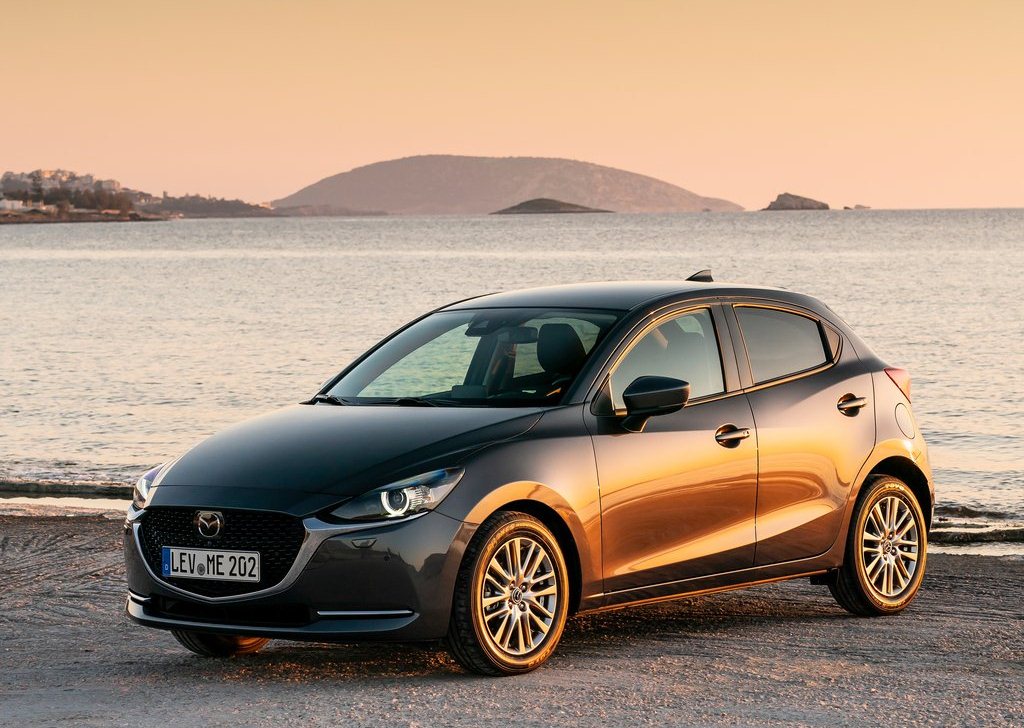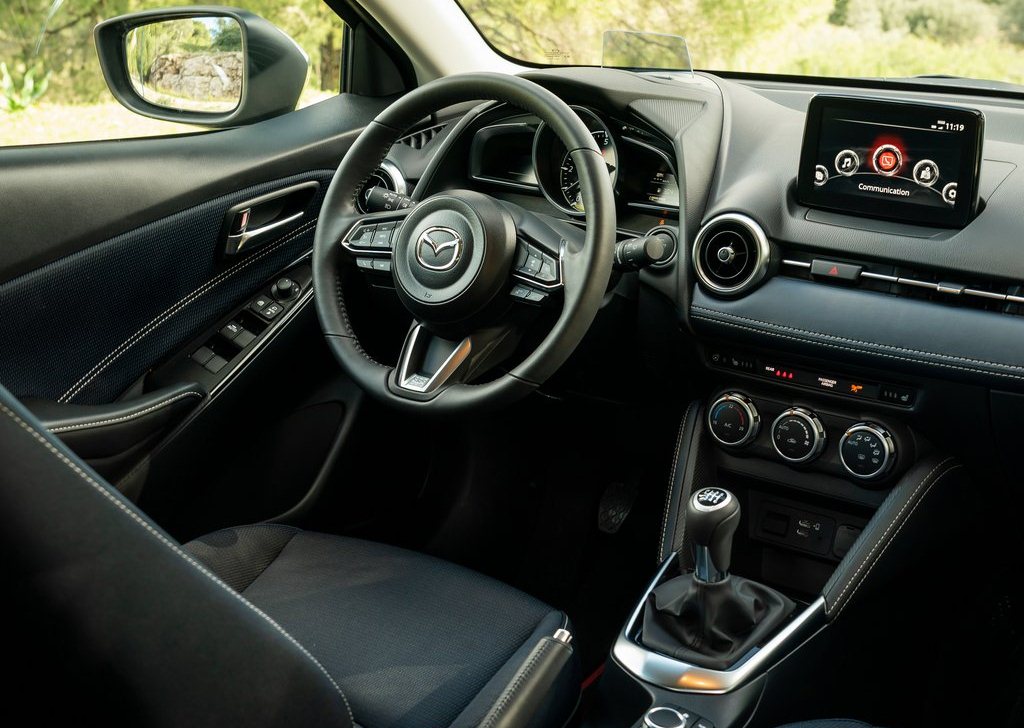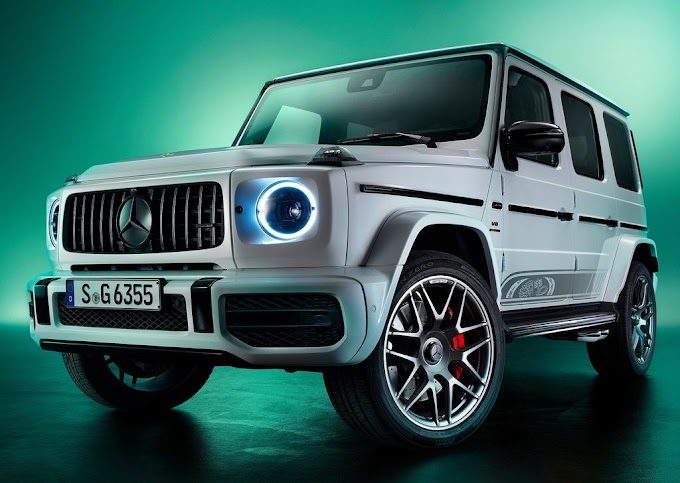The Mazda2 designers have imbued the new hatchback with a sense of width, stability and elegance by simplifying and eliminating elements. It is styled with simple yet rich surfacing, and a horizontal emphasis to reinforce the car's broad stance and low centre of gravity. Within the compact package, the front and rear bumpers, front grille, headlights and rear combination lights have been updated to create a finely chiseled, sculpted form with a luxurious, premium quality appearance.
The signature wing has been significantly extended for a wider, more bold appearance, and the wing tips underscore a sharp new LED headlamp design. The adoption of a stud pattern in the grille design gives it a solid yet dynamic look. The lower front and rear bumpers feature horizontal plated trim garnishes at their extremities to further reinforce both the prestige of the new design and the wide, planted appearance of the vehicle. And newly-designed 16-inch alloy wheels are trimmed with high-gloss paint to further heighten the premium appearance of the new Mazda2.
POWERTRAINS
The new 2020 Mazda2 is available with a choice of three Skyactiv-G 1,5l, DOHC 16 valve petrol engine, front-wheel drive powertrains - 75 PS and 90 PS MHEV (Mild Hybrid Electric Vehicle) variants with six-speed manual transmissions, and a 90 PS unit mated to a six-speed automatic gearbox. The 75 PS unit develops maximum power at 6000rpm and maximum torque of 135 Nm at 3800rpm. It will accelerate the Mazda2 from 0-100km/h in 11.4 seconds and on to a top speed of 171km/h, whilst returning a combined fuel consumption figure of 4.1l/100km and CO2 emissions of only 94g/km.
The 90 PS engine develops maximum power at 6000rpm, and maximum torque of 148Nm at 4000rpm. It offers 0-100km/h acceleration in 9.8 seconds and a 183kph maximum speed. Combined fuel consumption and CO2 emissions are 4.1l/100km and 94g/km respectively. Combined with a six-speed automatic transmission, the 90 PS unit matches the power and torque out of the MHEV variant, accelerates from 0-100km/h in 12.0 seconds and has a top speed of 177km/h. Combined fuel consumption is 5.2l/100km and CO2 emissions 118g/km.
M HYBRID TECHNOLOGY FOR ENHANCED ENVIRONMENTAL PERFORMANCE
Mazda's Skyactiv-eSync electrification technologies work together with the company's highly efficient Skyactiv engines to not only improve fuel economy and reduce CO2 emissions but also to enhance the quality of the driving experience. These technologies deliver efficient, smooth, high-quality dynamic performance by coordinating and harmonizing the functions of all actuators and motors, including the engine, transmission and brakes. 75 PS and 90 PS manual transmission versions of the new Mazda2 adopt Skyactiv-eSync technology for a compact car in the form of a unique mild hybrid system called Mazda M Hybrid.
Compact and highly efficient, the mild hybrid system combines Mazda's existing i-ELOOP regenerative braking technology with a belt-driven integrated starter generator (B-ISG) and a capacitor. The B-ISG converts recovered kinetic energy into electric power and stores it in the capacitor. When sufficient energy has been stored in the capacitor, the system uses the B-ISG's power-generation and drive functions to make the most of the stored electricity. Acting in combination with a six-speed manual transmission, the B-ISG delivers a refined driving feel by enabling the system to provide drive assistance and helping the engine restart more quickly and quietly after extended i-stop engine off periods.
The combination of Mazda M Hybrid technology and a new approach to tyre design has lowered the Mazda2's CO2 emissions from 111 g/km to just 94 g/km (75 PS and 90 PS with 6-speed manual transmission). Improved fuel economy and emissions performance: The B-ISG's motor assist function reduces the load on the engine and enables quick engine restarts that help to lower CO2 emissions and improve fuel economy by extending the auto engine stop operating time. The engine now remains off until first gear has been engaged and the driver is on the point of releasing the brakes. Quiet restart after auto engine stop: The belt drive suppresses vibration and delivers a quiet, smooth restart. Gear change assist when shifting up: When the driver backs off the accelerator and depresses the clutch in order to shift to a higher gear, the B-ISG proactively generates power to ensure that engine revs drop quickly to suit the higher gear. This delivers a smooth gear change with no shift shock.


















0 Comments